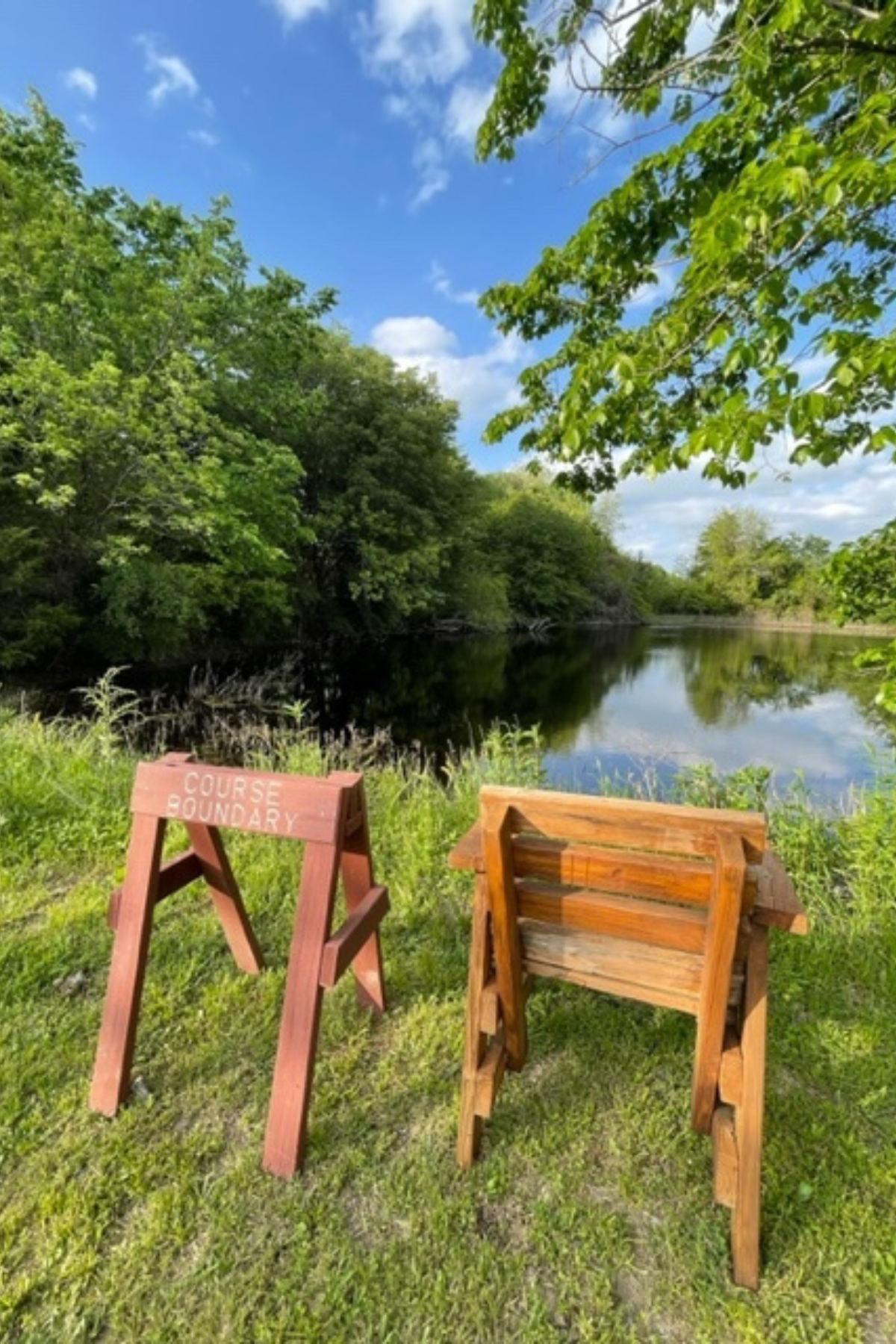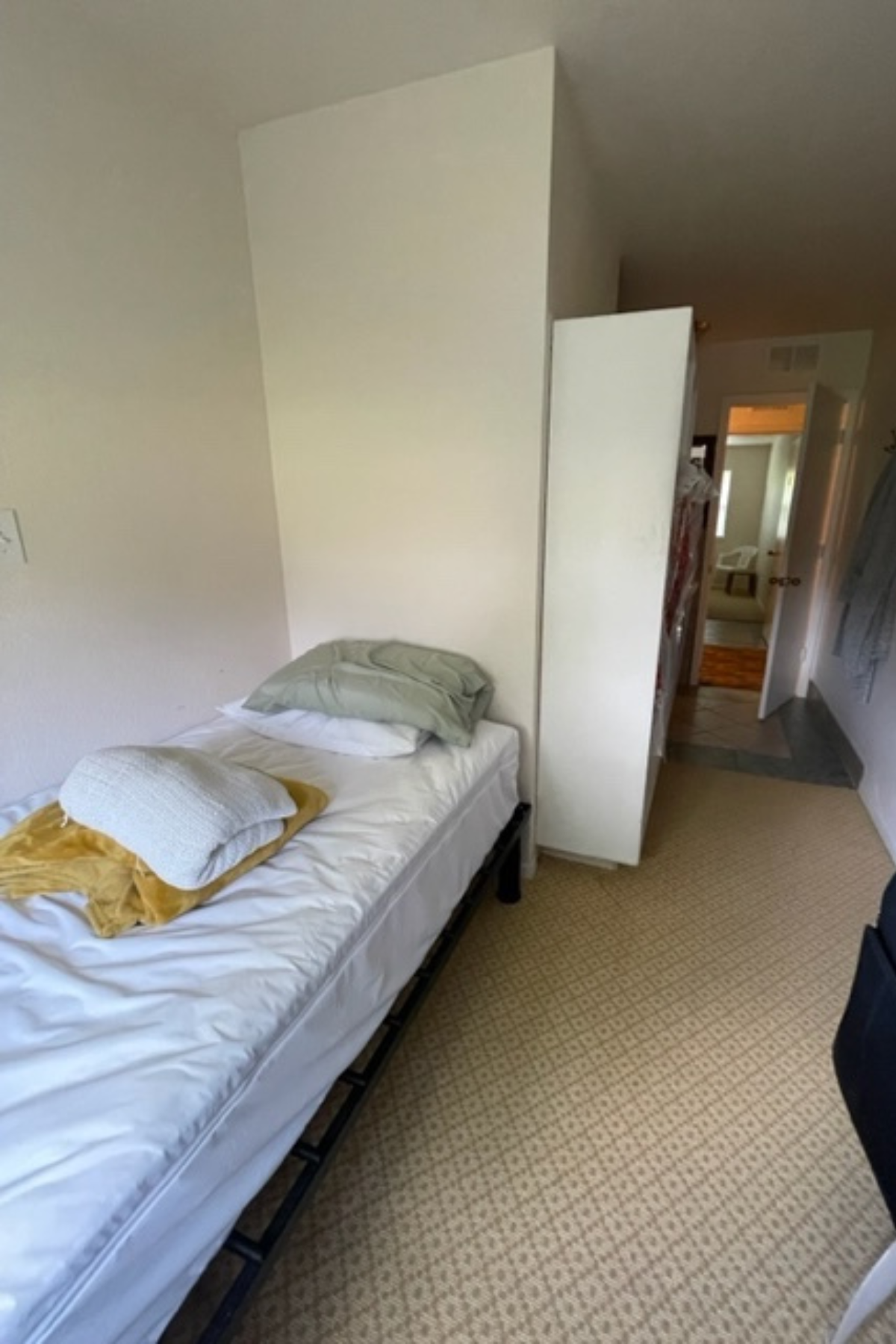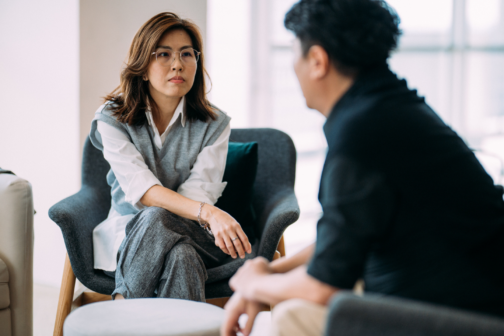I first heard about Vipassana retreats in 2016. My then-boyfriend and his circle of yoga teacher friends raved about these 10-day silent meditation courses. They insisted it was life changing.
Ten days in total silence. No phones, devices, or any connection to the outside world. No reading, no writing, no exercising, no sexual acts, no eating meals past noon. No way, I thought. I was a yoga instructor, but no way I would ever voluntarily throw myself into that zen prison.
Fast forward to 2020, and I was finally ready to dive deeper into meditation. I signed up for a 200-hour meditation teacher training. Vipassana was one of the 23 meditation lineages we studied. After a more dedicated meditation practice, I felt ready for 10 days of silence.
I applied to a center, but my timing wasn’t great. COVID shut down Vipassana centers worldwide. As they slowly re-opened, there was a dense backlog of students. It took years to get off waitlists, especially for new students.
In January, I applied a second time to Dhamma Siri Southwest Vipassana Meditation Center in Kaufman, about 40 miles southeast of downtown Dallas. It was the only Vipassana meditation center in Texas at the time. (This June, Texas opened its second Vipassana meditation center in New Ulm, between Houston and Austin.)
I was waitlisted until April, when I got the call. I had 48 hours to confirm my attendance for a 10-day course that would start in less than two weeks. Otherwise, my spot would go to someone else. Anxious, I waited one full day. Then I confirmed.
Dhamma Siri sits on a beautiful rural plot in Kaufman. It is one of 341 vipassana meditation centers in 94 countries and fashions itself as a place for people from all walks of life to converge in search of inner peace.
Vipassana is an ancient meditation technique that dates back more than 2,500 years to India. It focuses on breath awareness and body sensations. Re-popularized by Burmese native S.N. Goenka in 1969, vipassana teachings spread from India to the western world in the early 1980s with devoted practitioners from various religious beliefs.
This type of meditation is challenging because a practitioner sits completely still, in silence, for long periods of time. Gradually, this leads to breaking old habit patterns and training the brain to not react to every thought, perception, or sensation in day-to-day life. Studies show that over time, Vipassana meditation can reduce stress and anxiety, improve sleep and emotional control, and increase overall well-being.
Because this change takes time and focused effort, 10-day Vipassana courses and dedicated centers help students fully immerse themselves in the practice while eliminating outside distractions.


Prior to starting the course, Dhamma Siri sends a series of emails about the experience. The whole thing is 12 days, with 10 full days of silence in the middle. The emails warn about their strict rules. You cannot talk, except after a nightly discourse, and only to ask meditation questions to the teachers. There’s a rigid daily schedule; gongs ring at 4 a.m. Your last meal is at 11 a.m. Men and women are segregated for the entire course once registration is complete to avoid distraction and maintain unwavering focus. There are separate residential buildings, dining halls, and walking paths with labeled boundaries to avoid accidental crossover.
But everything is provided at no-cost. All food, lodging, and course expenses are covered by donations from past students.
I drove onto the property, nervous but excited. The grounds were simple and serene. I checked in, submitted a COVID test, and unpacked in the women’s dorm. Once settled, I went to the dining hall—the most shocking part of orientation day. You serve yourself from a vegetarian buffet then sit at an assigned seat facing the wall. That’s your spot for every meal. The baby blue wallpaper with tiny pink flowers wasn’t quite cutting it for me, so I scooted my chair to look out a nearby window. The playful squirrels and electric red robins would become my dearest companions.
Before the silence officially began, I wandered the grounds, discovering a pond with tiny turtles and an open field perfect for catching sunsets. There was a blonde woman probably in her early 30s sitting alone on a bench. I introduced myself. Danielle from Austin told me she’d never done anything like this before, but her boyfriend recommended it.
That night, we set up our meditation cushions in silence. We completed our first 45-minute meditation as a group, and I went to sleep that night feeling confident.
I woke up smiling with the sound of the 4 a.m. gong and eagerly made my way to the meditation hall. I sat completely still for an hour and 15 minutes. Then I couldn’t take it anymore. My mind felt taxed, heavy, tired. I got up from my spot in the meditation hall and went back to my room to stretch my body.
Later, I made my way to the first silent meal, sat down with my warm prune oatmeal, and stared out the window. Everyone was silent. Even eye contact was discouraged. We were instructed to act as though we were there entirely alone. But you could guess someone’s level of agitation by the clanking of their silverware.
The novelty of the first two days kept my mind engaged and attentive. I was adapting to the rhythm of our daily schedule and was adapting to the unknown. I didn’t know what the weather would be like, how many steps I’d taken each day, what we’d be eating later. I barely knew what time it was from hour to hour. This is all part of the process of letting go. As days went on, hours grew longer and longer. The repetitive nature of our structured meditations, meals, and moments in between wore on me. I started to feel almost robotic.
Before going into this course, I mentally split the silent days into thirds to make the experience more palatable: Days 1–3, 4–6, and 7–9. Days three and six were the toughest—at one point, I desperately pulled eyeliner out of the bottom of one of my bags, wondering if I could use it to write poetry on the blue course pamphlet. It didn’t work.
I wasn’t the only one struggling. Several women dropped out throughout the 10 days. We looked on silently as one elderly woman’s son and grandchild rolled her luggage to the parking lot. Another woman who sat behind me in the meditation hall disappeared after day six. There were others, including one woman who bailed on day nine, just one day before the retreat ended.

I surrendered to the process around day five. Giving in ultimately helped me to get through. Each night, I’d fall into my twin bed feeling grateful for making it through another day.
I typically don’t remember my dreams, but while on retreat, the dormant volcanoes of my mind would erupt during sleep. The scenarios were so vivid that I can recall almost every storyline with precise detail months later. Not all nights were graceful. Three nightmares shook me so badly that I woke up with heavy breathing, an intense heartbeat, and the feeling that the left side of my body was on fire. Unable to talk, journal, or listen to music, I sat with those nightmares until my body returned to homeostasis. That was by far the most difficult, torturous, and unexpected part of my Vipassana experience.
Course leaders and organizers do warn people that this is not for everyone. Those navigating significant trauma or tumultuous interpersonal relationships might not be suited for 10 days of silence until they reach a stable mental space. I don’t know if there is ever a perfect time to remove yourself from the world and crawl into the cave of your mind. But I do know that it is impactful.
The course officially ended after a final morning meditation and breakfast on the 12th day. But on day 11—day 10 of silence—by mid-afternoon, we were allowed to break our silence as a group. We still didn’t have access to our phones, we couldn’t intermingle with the opposite gender, and hugging and physical touch were still prohibited. But it didn’t matter. Finally, I could match voices with the faces that had become so oddly familiar, see personalities come alive after floating around each other like ghosts, and feel connection again.
Danielle rushed over to me in the same hallway and right away said, “Holy shit!” We walked outside and sat in the sun, feeling liberated mentally and vocally. We spoke honestly about the rollercoaster of the past 10 days. The energy between us and our experience was palpable. Another woman, Jamaica from San Antonio, joined us. We three formed a little pod. We talked and untangled the deep knots of our minds—then the gong rang, and it was time to meditate in silence again.
If you would’ve asked me on day two or three (or even on day seven or eight) how I imagined myself ending this journey, I would’ve anticipated being one of the first to peel out of the parking lot upon our release. Instead, I was one of the last to leave.
I spent the final moments making friends with Danielle, Jamaica, and others. Sharing this experience with so many strangers was complicated. We were bonded by this wild, silent adventure that outsiders might never understand. We spent so much meaningful time together—yet hardly know each other.
Months later, I still text with the friends I made at Dhamma Siri. I also practice silent meditation every morning. We all experience common thoughts and emotions like anger, love, grief, fear, and happiness. Just like weather, we can get caught in the emotional highs and lows or we can observe and let them pass in due time. Vipassana has helped me to practice accepting the reality of what I encounter rather than struggling through what I hoped would happen.
Seven years after doubting the value of stillness and silence, I finally understood what those yoga friends had told me. The invisible but formidable web of vipassana finally made sense.
Author






